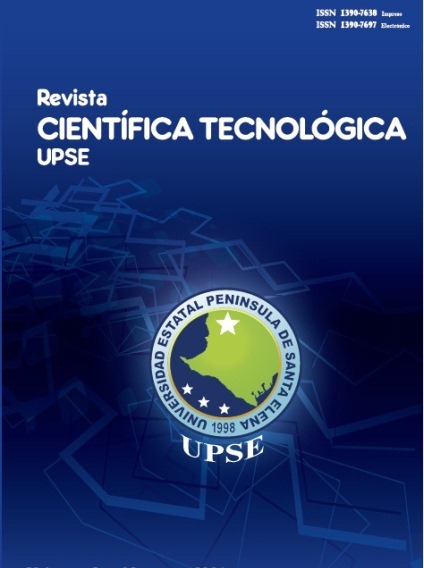Obtaining polyhydroxyalkanoates (PHA) from microbial mixed cultures using effluents rich in volatile fatty acids as substrate
DOI:
https://doi.org/10.26423/rctu.v2i1.36Keywords:
Bioreactor, Bioplastic,, mixed culture,, Polyhydroxyalkanoate, Volatile fat acidAbstract
The aim of this work is about the study of bioreactors in obtaining biopolymers (polyhydroxyalkanoate) by mixed microbial sources using cheese whey from the dairy industry as a substrate. To obtain polyhydroxyalkanoates (PHAs) is necessary to start with an enrichment process of the bacterial strain in a sequential batch reactor (SBR) where the microbial culture is subjected to a selection process in order to achieve the highest levels of polymer reserve. The substrate used is mainly compound of volatile short chain fatty obtained in a preliminary stage of treatment in an anaerobic reactor wherein the sugar content of the whey is subjected to a process of acids fermentation. Once enriched the bacterial cultures with great capacity of storage of PHAs, we proceed in other reactor process known as a Fed-Batch in order to obtain a maximum production of biopolymer. In this experiment the PHA obtaining was about 42% compared with the activate biomass.
Downloads
References
Albuquerque, M. G. E., Eiroa, M., Torres, C., Nunes, B. R., & Reis, M. a M. (2007). Strategies for the development of a side stream process for polyhydroxyalkanoate (PHA) production from sugar cane molasses. Journal of Biotechnology, 130(4),411–21.doi:10.1016/j. jbiotec. 2007. 05. 011
Albuquerque, M. G. E., Martino, V., Pollet, E., Avérous, L., & Reis, M. a M. (2011). Mixed culture polyhydroxyalkanoate (PHA) production from volatile fatty acid (VFA)-rich streams: effect of substrate composition and feeding regime on PHA productivity, composition and properties. Journal of Biotechnology, 151(1), 66–76. doi:10.1016/j.jbiotec.2010.10.070
Demirel, B., Yenigun, O., & Onay, T. T. (2005). Anaerobic treatment of dairy wastewaters: a review. Process Biochemistry, 40(8), 2583–2595. doi:10.1016/j.procbio.2004.12.015.
Bosco, F., & Chiampo, F. (2010). Production of polyhydroxyalcanoates (PHAs) using milk whey and dairy wastewater activated sludge production of bioplastics using dairy residues. Journal of Bioscience and Bioengineering, 109(4), 418–21. doi:10.1016/j.jbiosc.2009.10.012
Chakravarty, P., Mhaisalkar, V., & Chakrabarti, T. (2010). Study on poly-hydroxyalkanoate (PHA) production in pilot scale continuous mode wastewater treatment system. Bioresource Technology, 101(8), 2896–9. doi:10.1016/ j. biortech. 2009.11.097
Demirel, B., & Yenigun, O. (2004). Anaerobic acidogenesis of dairy wastewater: the effects of variations in hydraulic retention time with no pH control. Journal of Chemical Technology & Biotechnology, 79(7), 755–760. doi: 10.1002 /jctb.1052
Demirel, B., Yenigun, O., & Onay, T. T. (2005). Anaerobic treatment of dairy wastewaters: a review. Process Biochemistry, 40(8), 2583–2595. doi:10.1016/j.procbio.2004.12.015
García, Y. G., Carlos, J., Contreras, M., Reynoso, O. G., & Córdova, A. (2013). (Recibido diciembre 2011, aceptado noviembre 2012), 29(1), 77–115.
Johnson, K., Kleerebezem, R., & van Loosdrecht, M. C. M. (2010). Influence of the C/N ratio on the performance of polyhydroxybutyrate (PHB) producing sequencing batch reactors at short SRTs. Water Research, 44(7), 2141–52. doi:10.1016/j.watres.2009.12.031
Lemos, P. C., Serafim, L. S., & Reis, M. a M. (2006). Synthesis of polyhydroxyalkanoatesfrom different short-chain fatty acids by mixed cultures submitted to aerobic dynamic feeding. Journal of Biotechnology, 122(2), 226–38. doi:10.1016/j.jbiotec.2005.09.006
Lemos, P. C., Viana, C., Salgueiro, E. N., Ramos, A. M., Crespo, J. P. S. G., & Reis, M. A. M. (1998). Effect of carbon source on the formation of polyhydroxyalkanoates ( PHA ) by a phosphate-accumulating mixed culture, 0229(97), 662–671.
Reis, M. a M., Serafim, L. S., Lemos, P. C., Ramos, a M., Aguiar, F. R., & Van Loosdrecht, M. C. M. (2003). Production of polyhydroxyalkanoates by mixed microbial cultures. Bioprocess and Biosystems Engineering, 25(6), 377–85. doi: 10. 1007 /s00449-003-0322-4
Salehizadeh, H., & Van Loosdrecht, M. C. M. (2004). Production of polyhydroxyalkanoates by mixed culture: recent trends and biotechnological importance. Biotechnology Advances, 22(3), 261–279. doi:10.1016/j.biotechadv.2003.09.003
Yang, K., Yu, Y., & Hwang, S. (2003). Selective optimization in thermophilic acidogenesis of cheese-whey wastewater to acetic and butyric acids: partial acidification and methanation. Water Research, 37(10), 2467–77. doi:10.1016/S0043-1354(03)00006-X
Downloads
Published
Issue
Section
License
El titular de los derechos de autor de la obra, otorga derechos de uso a los lectores mediante la licencia Creative Commons Atribución-NoComercial-CompartirIgual 4.0 Internacional. Esto permite el acceso gratuito inmediato a la obra y permite a cualquier usuario leer, descargar, copiar, distribuir, imprimir, buscar o vincular a los textos completos de los artículos, rastrearlos para su indexación, pasarlos como datos al software o usarlos para cualquier otro propósito legal.
Cuando la obra es aprobada y aceptada para su publicación, los autores conservan los derechos de autor sin restricciones, cediendo únicamente los derechos de reproducción, distribución para su explotación en formato de papel, así como en cualquier otro soporte magnético, óptico y digital.












